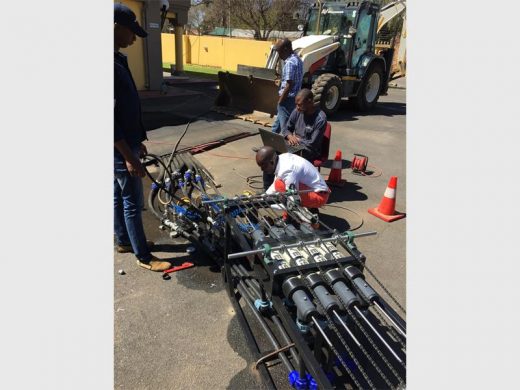Innovative friction can power South Africa
Friction on 2km of the M1 has the potential to provide the country with electricity.

If you lay this piece of material on a road and cars drive over it, the pressure from that will start rotating the turbine and generate electricity.
It was an idea that was born in 2011 when an Airbus passenger jet touched down at OR Tambo International Airport.
The friction produced during the aircraft’s landing sparked the idea behind the innovative Vehicle Energy Harvesting System, which generates electricity in a new, ingenious and eco-friendly way, Kempton Express reports.
READ MORE: Green light for Eskom to purchase renewable energy
Today, this remarkable invention has earned its inventor, civil engineer Clement Mokoenene of Glen Marais, a place in the international leg of the prestigious Chivas Venture competition for entrepreneurs.
After winning the national leg of the competition in Newtown, Johannesburg, on February 9, Mokoenene (43) will be heading to Amsterdam in May to represent South Africa in the competition.
Mokoenene will be vying with 28 other innovators from around the globe for a share of US$1-million in start-up funding.
He is rallying support not only from his community but from South Africa as a whole.

Clement Mokoenene of Glen Marais.
Mokoenene said his innovation is part of a drive to generate electricity using cleaner and more renewable energy sources.
“This is not mere electricity but it is electricity that can save the planet,” Mokoenene said. “We have come up with a system that if we lay a piece on a road and cars drive over it, the pressure from that will start rotating the turbine and generate electricity.
“If you think about it, cars are quite heavy and we have a lot of traffic, so we believe this system has huge potential.”
He said the idea came to him when he was at OR Tambo International and thought about the pressure applied by the plane to the runway as it landed. He then started to wonder how this pressure could be used.
“I started wondering if there was a way to harvest that pressure and convert it into a usable form and generate electricity.”
He said finding a way to retain the pressure was the most difficult part of the process.
“We put an overlay over an existing road with a series of pipes installed in it,” Mokoenene explained.

The chains that connected to the central shaft, which is like a wind turbine, will turn, and as it goes electricity will be generated.
“As vehicles drive over these pipes, they pressurise the fluid in the pipes. The fluids are connected to a reciprocating cylinder, which will move back and forth. As it moves, the chains that are connected to the central shaft, which is like a wind turbine, will turn, and as it goes electricity will be generated.”
He said this is a relatively cheap method that could be used to electrify many households in South Africa.
“Our calculations indicated that a 2km stretch of the M1 highway, which carries about 500 000 vehicles a day, could produce potentially enough pressure that if we could harvest all of it, the entire country could be powered.”
To vote for Clement Mokoenene, go to Chivas Ventures and choose the best inventions from 28 countries.
The voting will run from April 4-24.
Go to www.chivas.com to watch presentations and vote.
For more news your way, follow The Citizen on Facebook and Twitter.







